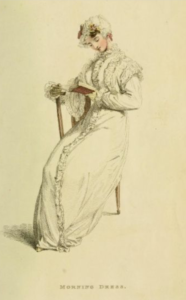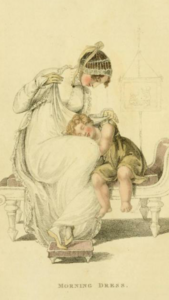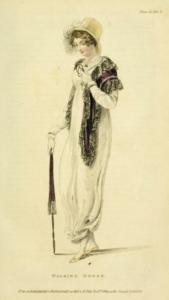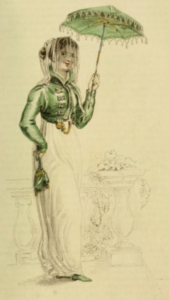I’ve been busy on the last revisions of Surrender to Ruin before I send it to a trusted reader. The hero of this book owns a gaming hell and some brothels which he continues to operate despite having inherited a title. As I wrote the book, I gave him a partner in the business. This was due to a number of things having to do with plot and research that indicated hells were frequently run by more than one person.
Without spoilers, his partner is from India, a man who came to England as the servant of an Englishman and then found himself without a job because his former employer’s new bride objected to his presence in the house. He and my hero meet as near destitute young men in London and embark upon their life skirting the edges of legality. They make a lot of money in the process. The life of boxer Bill Richmond (I interviewed Richmond’s biographer in that post) made it clear some of our notions of diversity in the Regency are very wrong. If you haven’t read the biography, I urge you to do so. It’s a wonderful book. Richmond clearly earned social distinction. He was a participant in George IV’s coronation ceremony. Not someone who watched. He participated in ceremony.
My hero’s partner, therefore, is an Indian man living in England, who is wealthy and a businessman in his own right. And he needed a name. I could have made one up. Instead I asked one of my former colleagues from India if I could use his name. He and I worked very closely together in a fast, tense environment. I did indeed explain that the character would own a gambling hell and brothel. And he graciously agreed to let me use his name for the character.
And now, as I write and flesh out this character, I keep thinking of my friend and colleague who lent his name. And, well, if this character seems super smart and really, really nice, it’s because the person whose name I’m using is both those things. He was always going to be awesome, since he’s my hero’s buddy, but now he’s really awesome.
Other News
I have a boxed set of three of my historical romances just now out. Three full length novels for less than $5.00.
The three books include The Spare, Scandal, and Indiscreet. It’s a bargain, so if you don’t have these books, here’s your chance to get three for essentially the price of one.
All Romance | Amazon | Barnes&Noble | iBooks | Google Play | Kobo



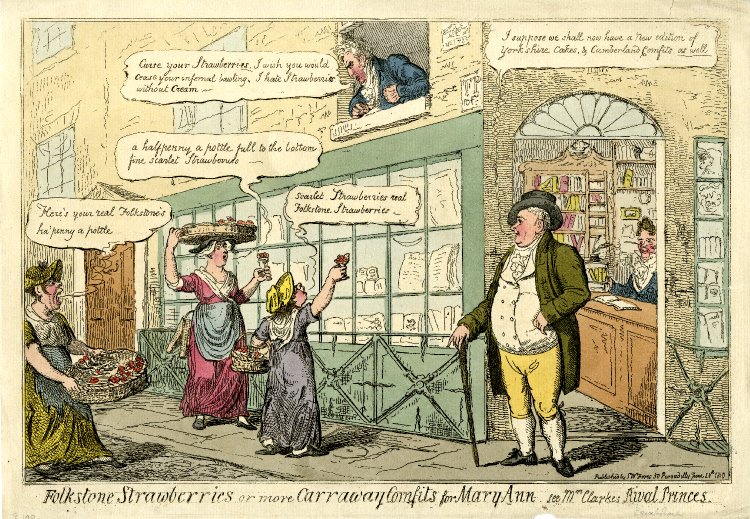

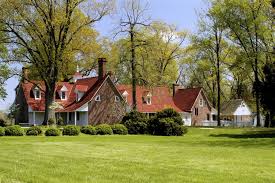 I went on a field trip yesterday with a bunch of museum/history geeks to
I went on a field trip yesterday with a bunch of museum/history geeks to 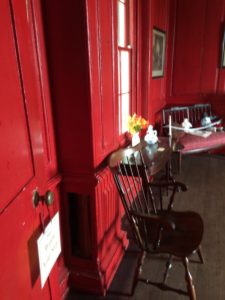 years after, which forms the core of the house. It’s possible to date it so accurately because dendochronology has determined that the cypress posts used in construction date to 1703. This extremely red room, apparently a highly popular color in the period, is the oldest part of the house. There’s a dark rectangle to the right of the notice on the door which is actually a hole cut in the woodwork to reveal the original cypress post.
years after, which forms the core of the house. It’s possible to date it so accurately because dendochronology has determined that the cypress posts used in construction date to 1703. This extremely red room, apparently a highly popular color in the period, is the oldest part of the house. There’s a dark rectangle to the right of the notice on the door which is actually a hole cut in the woodwork to reveal the original cypress post.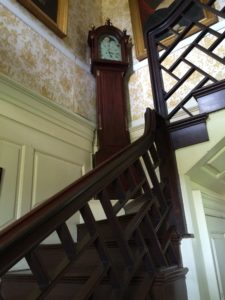 Naturally subsequent owners began to make expansions and improvements, and suddenly, later in the century, Chinoiserie became all the rage. Hence this extraordinary staircase in the expansion of the house undertaken by George Plater III (lots of Georges in this family). He also became a governor of the State of Maryland, and, eew, I cannot get this out of my head: he married a 13 year old who had their first baby when she was 14, and who became, according to the Sotterly website, “a political and social asset to her husband.” Gawd.
Naturally subsequent owners began to make expansions and improvements, and suddenly, later in the century, Chinoiserie became all the rage. Hence this extraordinary staircase in the expansion of the house undertaken by George Plater III (lots of Georges in this family). He also became a governor of the State of Maryland, and, eew, I cannot get this out of my head: he married a 13 year old who had their first baby when she was 14, and who became, according to the Sotterly website, “a political and social asset to her husband.” Gawd. A pretty yellow parlor was added in this period and the shell alcoves in the room are original (built with help from Mt. Vernon’s slaves).
A pretty yellow parlor was added in this period and the shell alcoves in the room are original (built with help from Mt. Vernon’s slaves).


